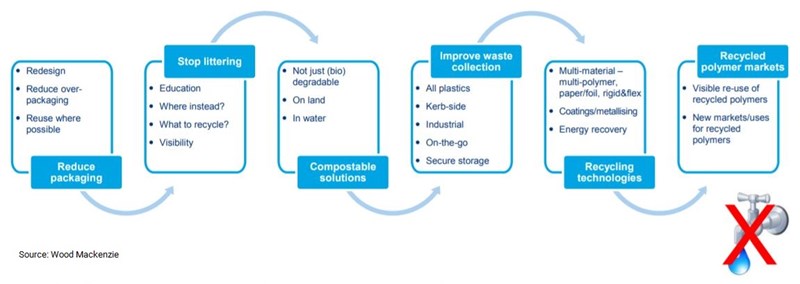Flexible packaging: Is it time to find a more sustainable replacement?
Flexible packaging is widely used but difficult to recycle. We need holistic solutions to address the problem.
1 minute read
The flexible packaging market has grown steadily, increasing in value by 4 to 5% each year for the last 20 years. It has become an integral part of modern-day life. Is it now time to find a more sustainable replacement?
Ironically, flexible packaging became popular in Europe the 1980s in an effort to stop millions of tonnes of packaging waste being sent to landfill.
What was thought of as an answer to a growing waste problem has now become the problem.
How do we find a long-term, sustainable packaging solution that is viable and meets environmental objectives across the supply chain?
Why choose flexible packaging?
The stand-up pouch neatly illustrates flexible packaging’s advantages. Pouches are appealing to producers because they are lightweight and strong, have a smaller carbon footprint compared to traditional rigid packaging formats and offer a larger surface area for eye-catching brand messages.
They meet the criteria for consumer convenience by providing functional properties such as they are easily re-sealable and microwaveable.
In addition, tailored barrier materials in pouches and other forms of flexible packaging help protect food from moisture, oxygen, UV rays, grease, and contamination, and can significantly extend shelf-life.
How do we solve the waste problem?
Flexible packaging ticks a lot of boxes but there is one major challenge: it is not easy to recycle.
There are no simple solutions to this complex problem. At face value, switching to a biodegradable material such as a home-compostable food wrapper would help reduce the amount of plastic waste in our oceans.
But how would this affect the rest of the packaging supply chain? For example, if all food manufacturers were to make the switch, we would need much more compostable film extrusion capacity than we currently have. Somewhere in the value chain, prices would have to increase to account for a product that is much more expensive than current packaging.
Most importantly, biodegradable plastics are not likely to solve the problem of ocean litter – almost all are designed to break down in soil, not water.
Why a coordinated approach will deliver maximum impact
To address the problem effectively, we need holistic solutions that involve every stage of the packaging supply chain. There are numerous initiatives already underway to improve sustainability.
Manufacturers are exploring new designs and ways to reduce over-packaging. Much has already been done to make plastic film production more energy efficient – could producers do more?
Work to improve recycling technology would help to reduce the amount of material that ends up as litter.
While consumers are well aware of the problem of plastic waste, there needs to more education about its value. Plastic needs to be viewed as a product that can and should have another life, rather than as simply a throw-away commodity. Finding new markets for recycled plastics will reinforce the message that plastic has value.
Packaging waste is a complex problem. Coordinated, holistic solutions that involve every part of the supply chain will have the biggest impact.
At the 2018 Living with Plastic Packaging conference, we asked, how we can carry on "Living with Plastic Packaging"? Get your copy of the presentation slides to learn more about sustainable solutions to address packaging waste. Fill in the form on this page.






